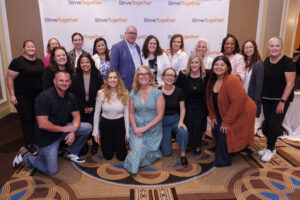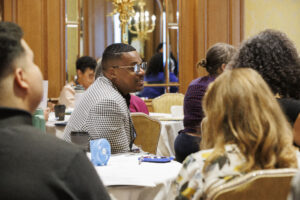The Kem C. Gardner Policy Institute published a report, “Educational Achievement and Workforce Development: A Review of Community-Based Approaches.” The report provides an analysis of community-based initiatives and their efficacy for improving outcomes and economic mobility for Utah’s youth.
The study was commissioned by the Utah State Legislature during the 2025 General Session at the request of Sen. Lincoln Fillmore. “This report reinforces that the best solutions can come from our own communities,” Sen. Fillmore said in a press release published by the Gardner Institute announcing the report. “When we work together, we can improve outcomes for kids no matter their circumstances.”
What’s in the Report?
The primary finding from the report is that when community-based partnerships align schools, families, and community organizations around shared cradle-to-career outcomes, they offer a promising way to improve education, health, and economic opportunity for Utah youth. This alignment has the power to amplify the impact that each of these entities has on its own by removing silos, working toward shared goals, and sharing accountability for achieving those goals.
The report examines several national models of cradle-to-career partnership work including StriveTogether, Harlem Children’s Zone, and Partners for Rural Impact. These national initiatives have shaped the field of cradle-to-career partnerships and provide a framework for partnership initiatives on a local scale. The report also looks at community-based initiatives in other states such as Florida Children’s Initiative, Ohio Regional Education Partnerships, and others to provide models for strategies, governance models, and funding approaches.
These national- and state-level comparisons provide context for similar community-based initiatives that already exist in Utah. The report discusses Promise Partnership Utah, Promise South Salt Lake, Millcreek Promise, and the Roy Cone Project as key initiatives that are already doing this work in our state to improve outcomes for youth, disrupt the cycle of intergenerational poverty, and better prepare Utah’s future workforce.
Finally, the report discusses the key characteristics of effective partnerships, offers considerations for governance and accountability, and provides some recommendations for how best to implement and strengthen these types of initiatives with public-private funding models.
Why it Matters
This research reinforces the work Promise Partnership Utah has been doing for over a decade: aligning cross-sector partners to get better results for Utah kids and families.
Strengthening community-based partnership initiatives is an investment not only in the individual youth who need our support; it is also a greater investment in the future of our communities, our economy, and our state. State-level community-based partnership initiatives support Utah’s youth to succeed in school and in life and better prepare Utah’s future workforce.
Andrea Brandley is the Senior Education Analyst at Kem C. Gardner Policy Institute and author of the report. “This research underscores the potential of community-based partnerships in creating pathways to success for Utah youth,” Brandley said in the Gardner Institute press release. “By aligning education, health, and community support, we can create environments where children have the opportunity to thrive.”
Key Takeaways
- Children’s education, health, and economic outcomes differ widely across Utah communities. Utah children in higher-poverty areas demonstrate lower rates of upward mobility, lower educational attainment, and shorter life expectancy.
- There are many national and state-level initiatives that provide examples for how to effectively implement community-based partnership work and improve outcomes for youth from cradle to career.
- Community-based initiatives that are already doing this work in Utah include Promise Partnership Utah, Promise South Salt Lake, Millcreek Promise, and the Roy Cone Project.
- Aligning efforts could create a more comprehensive system of support by improving coordination, avoiding duplication, filling service gaps, and directing resources where they are most needed.
- Effective community-based partnerships include a shared vision and accountability, cross-sector collaboration, coordinated backbone structure, data-driven continuous improvement, community-rooted approach, and sustainable funding and policy alignment.
- Investment in community-based, cradle-to-career approaches may strengthen Utah’s investments in children and youth and improve outcomes for children and families across education, health, and workforce measures.
Written by Jenna Fischer, Content Strategist




